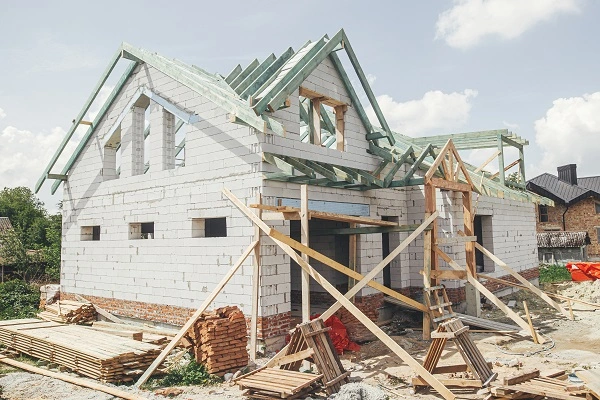The struggle is real. Hard work pays off eventually. That is the same case for construction projects. The construction industry has become new in the past two decades, with the inclusion of technology and proper planning. Constructing a project has always been challenging. Gone are the days when you would rely on manual tasks. Preliminary estimates are the key to unlocking accurate results. In this article, we will embark on a journey to get into preliminary estimates and how they can help make a difference in today’s construction industry.
Preliminary cost estimates comprise a range of steps that are helpful in the early stages of the construction project. This helps with estimating costs and timeframes. A construction project is a big endeavor. Rome wasn’t built in a day. The most important aspect of this undertaking is costs. The only way to find out that is with a preliminary cost estimate. Not using them can cause havoc. Cost overruns and delays are the only ones. Expect to make costlier decisions as well.
Preliminary estimates are a great tool to navigate the uncertainty. They help create a path to success. By employing preliminary cost estimates, you can expect to:
Set realistic budgets
Assess the Financial Outlook of the construction project.
Determine what resources you may require
Reduce your risks with contingency planning
7 Preliminary Estimates Of The World:
There are seven types of preliminary estimates. Each comes with its parameters. These are
Conference Method For Preliminary Construction Cost Estimates.
Considered by many as the most potent preliminary estimates. Its emphasis is on collaboration. The collective wisdom of team work is what make this essential. It brings everyone who are part of the project on the same page. Talking about it helps understand the project more clearly. All people who collaborate on the project must have the relevant experience. This preliminary cost estimate is excellent when no historical cost data exists.
Financial Method
These preliminary construction cost estimates use financial data. It also involves using market trends and historical data to correctly estimate the project. The number helps give proper insight into future expenses and making decisions. The financial method helps determine the maximum amount required for the construction project. Once we have that information. We move to creating a cost limit. A threshold of sorts. The next step is the design and allocation of resources. Keep in mind that money depreciates over time. To make sure that this estimate stands out, you will need to compare it with the initial investment to get an idea of the final costs.
Unit Method
This approach enables speedy estimations by exploiting past data. Historical data enables the unit method to do wonders for you. This is only good when you do have historical data. But when you don’t, you’re out of luck. Other methods can help you get out of this bind. In reality, this type of preliminary construction cost estimates work when you have old data.
Superficial Area Method
Like the Unit Method, the Area Method is a preliminary construction cost estimate for project expenses. This strategy, however, considers the “cost per area” of a preceding project rather than the “cost per functional unit.” To compute this procedure, you’ll need:
Measurements and deductions
External and specialized works.
It is crucial to remember that the Size Method, like the Unit Method, provides a rough estimate and is usually employed in the early stages of a project. When the design and total area of the building are known. It is a quick approximation to obtain an idea of the prospective costs. Similarly, the Area Method demands adjustments to account for considerations such as time, location, and special requirements, all of which can influence cost. By considering the individual characteristics and conditions of the present project, these changes help to improve the estimate and produce a more realistic cost projection.
Cube Method
This type of preliminary cost estimate incorporates the building’s volume rather than its size. Unlike the Superficial Area Method, the Cube Method requires more thorough and established designs to determine volume effectively. This method provides a more precise estimate by considering the height of the building.
Adjustments for elements such as time, location, and special requirements remain necessary in the Cube Method because they influence the project’s cost. These modifications ensure the estimate is appropriate for the context and considers variables affecting the overall cost.
The Cube Method allows project stakeholders to better understand the costs associated with the building’s volume.
Elemental Method And Preliminary Cost Estimates.

The elemental method is another effective preliminary cost estimate technique. While the approaches outlined above can anticipate total construction costs, they may not provide information about the particular cost targets for various building components or features. The Elemental Method bridges this gap by anticipating the cost of each element based on data.
Instead of comparing the entire cost of a prior project, this method concentrates on calculating the cost of individual elements such as substructure, frames (columns and beams), internal and external walls, finishes, and so on.
Rather than relying merely on a previous project’s total cost, the cost of individual elements is included when calculating the elemental unit cost. This entails breaking down the building into its essential components and determining the price of each one.
To forecast the cost of each element in the future project, multiply the elemental unit costs derived from previous records by the elemental quantities unique to the new project. This estimation approach provides a more complete insight into each aspect’s expenses.
Approx. Quantity Method
When sufficient information is available, the Approximate Quantity Method is widely recognized as a trustworthy and accurate cost assessment method. These preliminary construction cost estimates enable a quick measuring process by applying composite rates, saving significant time. While the measurement standards are simple, they can vary significantly.
Except for massive holes, all measurements are measured grossly. This means estimates are based on overall dimensions rather than specific apertures or voids. Initially, establishing composite rates may necessitate some time commitment.
Conclusion
In construction, where every decision and calculation is significant, early estimation methods serve as guiding lights. These strategies enable construction project stakeholders to make educated decisions, create realistic budgets, and lay a solid basis for success.




